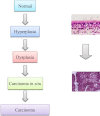Understanding drug uptake and binding within targeted disease micro-environments in patients: a new tool for translational medicine
- PMID: 23369501
- PMCID: PMC3560985
- DOI: 10.1186/2001-1326-1-8
Understanding drug uptake and binding within targeted disease micro-environments in patients: a new tool for translational medicine
Abstract
Background: For many common global diseases, such as cancer, diabetes, neurodegenerative and cardiovascular diseases there is an unmet need for diagnosing early indications of disease that could enable medical intervention and early treatment. The treatment of these diseases will require detailed knowledge of targeted pathways involved in disease pathogenesis but also the mode of drug actions at the biological location on these targets. Translational medicine is a new area of research where expert from different disciplines involved in basic science and clinical disciplines meet and join forces. Mode-of-drug-action mechanisms elucidation is key in the characterization of drugs that can relate to both efficacy and safety.
Methods: Matrix assisted laser desorption/ionization mass spectrometry imaging (MALDI-MSI) was used providing evidence into the fate (destinations and distributions) of administered drugs within tumor regions of lung compartments.
Results: We hereby present a pulmonary study in which we have isolated lung tissue after inhaled drug administration and then localized the drug within airway wall compartments. The histology also provides evidence of drug binding to smooth muscle cell microenvironments. We also identified lung tissue regions with tumor cell invasion in these COPD patients.
Conclusions: The ultimate goal is to identify bridging comprehension that forms a knowledge base that can be used by society to develop a better treatment and medicine for patients. Our results demonstrated that robust imaging data could be generated confirming drug localization in pulmonary regions of COPD patients with tumor pathology.
Trial registration: Tallinn Medical Research Ethical Committee decision #1724, 18.06.2009.
Figures






References
-
- Vegvari A, Rezeli M, Dome B, Fehniger TE, Marko-Varga G. Translation Science for Targeted Personalized Medicine Treatments. In Selected Presentations from the 2011 Sino-American Symposium on Clinical and Translational Medicine. Edited by Sanders S. Washington DC: Science/AAAS. 2011; :36–37. [Sanders S (Series Editor)
-
- Ausborn NL, Le QT, Bradley JD, Choy H, Dicker AP, Saha D, Simko J, Story MD, Torossian A, Lu B. Molecular Profiling to Optimize Treatment in Non-Small Cell Lung Cancer: A Review of Potential Molecular Targets for Radiation Therapy by the Translational Research Program of the Radiation Therapy Oncology Group. Int J Radiat Oncol Biol Phys. 2012; : . - PubMed
LinkOut - more resources
Full Text Sources
